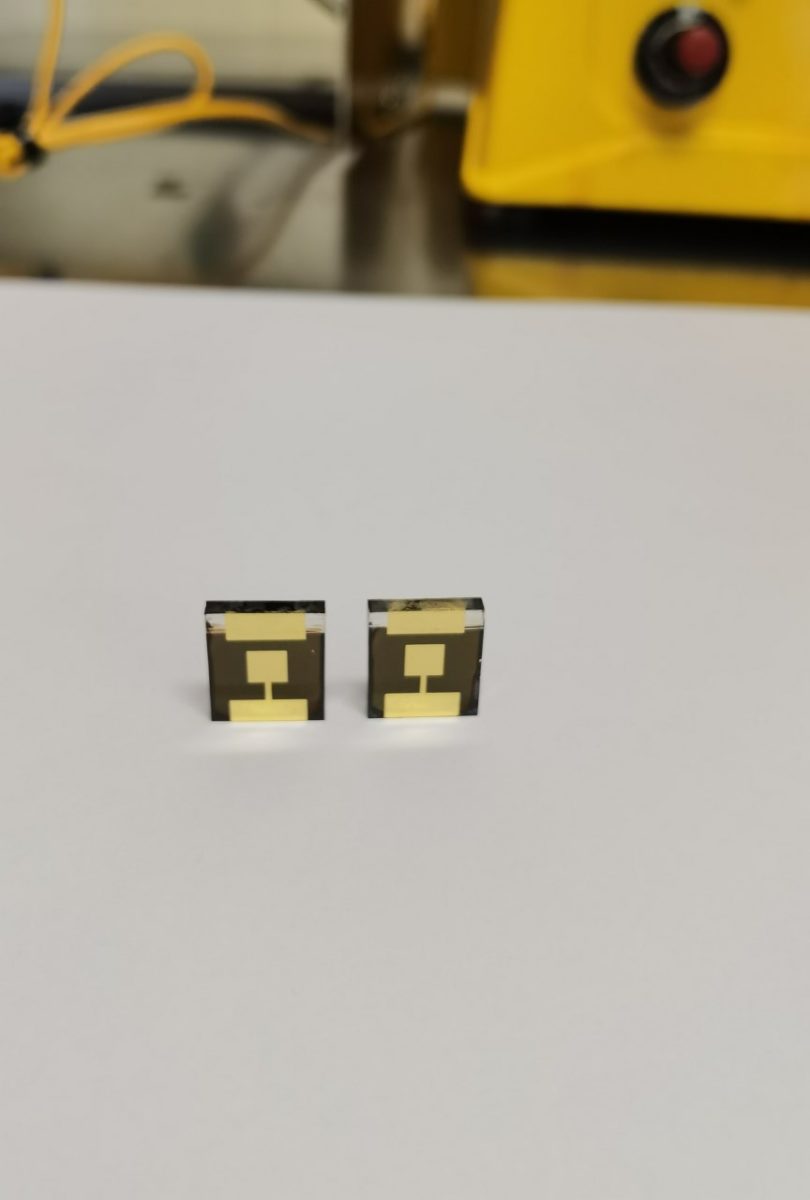This content is protected by copyright and may not be reused. If you want to cooperate with us and would like to reuse some of our content, please contact: editors@pv-magazine.com.
Perovskite solar cell with record-breaking fill factor of 86.6%

An unencapsulated version of the cell was also able to retain 98.7% of its initial efficiency after operating for 200 hours under standard illumination conditions
Image: The Australian National University,
An Australian-Chinese research group has fabricated a 1 cm2 perovskite solar cell with a certified power conversion efficiency of 22.6% and an average fill factor of 85.3%. The device was built with a nitrogen-doped titanium oxide (TiOxNy) electron transport layer aimed at improving charge transport between the cell's perovskite absorber and the electrodes.
“The TiOxNy electron transport layer was prepared by sputtering, and the cost is very low, which is an ideal electron transport layer for large-area perovskite solar cells,” the research's corresponding author, Jun Peng, told pv magazine. “I would say that the TiOxNy is an ideal electron transport layer for perovskite cell mass production. If the perovskite stability issue can be solved in the future, it can be used as a standalone perovskite cell panel and would be perfect for use as a top cell for perovskite-silicon tandems as well.”
The TiOxNy films were manufactured by oxidizing sputtered titanium nitride thin films through a controlled annealing temperature in an oxygen atmosphere. “High-resolution transmission electron microscopy (TEM) imaging shows that the as-deposited film is not completely crystalline and features an amorphous contrast along with a distribution of crystalline particles with characteristic sizes ranging from 10 nm to 20 nm,” the scientists wrote.
The films were annealed at temperatures ranging from 300 to 550 degrees Celsius and those annealed at over 450 degrees Celsius were found to exhibit higher conductivity and higher optical transmittance.
The device was built on a glass substrate, a fluorine-doped tin oxide (FTO) electrode, a TiOxNy layer, the perovskite film, and a blended hole transport layer consisting of poly(3-hexylthiophene) and copper phthalocyanine. The champion cell achieved a power conversion efficiency of 23.3%, an open-circuit voltage of 1.193 V, a short-circuit current of 22.80 mA cm2, and a fill factor of 86.6%. “This is, to our knowledge, the highest certified efficiency for 1-cm2 perovskite solar cell and the highest fill factor reported for perovskite cell of any size,” the academics emphasized.
An unencapsulated version of the cell was also able to retain 98.7% of its initial efficiency after operating for 200 hours under standard illumination conditions. Stability was also tested for different device configurations and all cells were able to retain over 90% of their initial efficiencies after 1,000 hours. “Although both the light-soaking and damp-heat stability tests show promising results, these are not sufficient to guarantee the stability of perovskite cells under real operating conditions where thermal, light and humidity stressors act simultaneously,” the academics warned.
“We haven't estimated the cell costs so far,” Peng told pv magazine.
The cell is described in the study “Centimetre-scale perovskite solar cells with fill factors of more than 86 per cent,” published in nature. The research group is comprised of scientists from the Sun Yat-sen University in China and the Australian National University.


1 comment
By submitting this form you agree to pv magazine using your data for the purposes of publishing your comment.
Your personal data will only be disclosed or otherwise transmitted to third parties for the purposes of spam filtering or if this is necessary for technical maintenance of the website. Any other transfer to third parties will not take place unless this is justified on the basis of applicable data protection regulations or if pv magazine is legally obliged to do so.
You may revoke this consent at any time with effect for the future, in which case your personal data will be deleted immediately. Otherwise, your data will be deleted if pv magazine has processed your request or the purpose of data storage is fulfilled.
Further information on data privacy can be found in our Data Protection Policy.